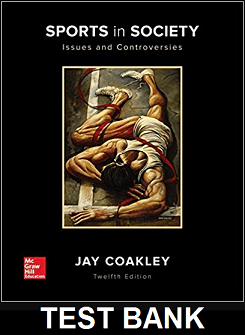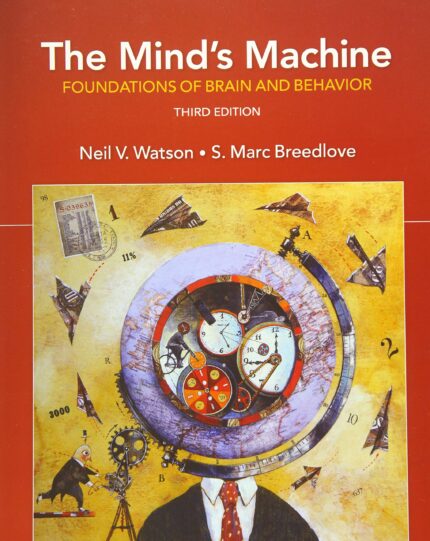Sports In Society 12th Edition By Coakley – Test Bank
Chapter 05 Deviance in Sports: Is it Out of Control? Answer Key
Multiple Choice Questions
|
1. |
Which of the following is NOT true about norms? A. They differ from one situation to the next. B. They exist only in formal social situations. C. They include both written laws and unwritten customs. D. They are used to identify deviance. |
|
Accessibility: Keyboard Navigation |
|
2. |
As the term is used by sociologists, deviance A. always involves a violation of a law. B. is punished only when it occurs in formal social situations. C. refers to any action that is seen as different. D. can involve a person’s ideas and traits as well as actions. |
|
Accessibility: Keyboard Navigation |
|
3. |
Studying deviance in sports presents problems in that A. psychological research shows that athletes have conforming personalities. B. coaches enforce rules so strictly that deviance seldom occurs. C. actions that are normal in sports may be deviant outside sports. D. athletes don’t understand the differences between sports and the rest of life. |
|
Accessibility: Keyboard Navigation |
|
4. |
One of the reasons that it is difficult to study deviance in sports is that much of it involves actions grounded in A. accepting and overconforming to norms in sport cultures. B. a rejection of norms and expectations in society and sports. C. strong feelings of despair and alienation among athletes and coaches. D. a strong desire on the part of athletes to avoid responsibility. |
|
Accessibility: Keyboard Navigation |
|
5. |
One of the reasons that it is difficult to study deviance in sports is that A. athletic training occurs in settings where athletes are difficult to observe. B. the types and causes of deviance in sports are very diverse. C. people in sport organizations do not care about ethical issues. D. there are rules that prohibit arresting athletes in some communities. |
|
Accessibility: Keyboard Navigation |
|
6. |
It has become difficult to determine what actions are deviant and what actions are accepted parts of athletic training today because A. athletic training occurs in settings where athletes are difficult to observe. B. athletes tend to be less moral than other people. C. people in sport organizations don’t care about ethical issues. D. all training involves surpassing limits that are accepted as normal in society. |
|
Accessibility: Keyboard Navigation |
|
7. |
When a basketball player dribbles the ball out of bounds during a game, she has A. committed a personal foul. B. violated a formal norm. C. engaged in informal deviance. D. engaged in an immoral act. |
|
Accessibility: Keyboard Navigation |
|
8. |
When two college basketball players turn their back to the U.S. flag during the playing of the national anthem, they A. violate an informal norm. B. engage in formal deviance. C. violate a formal norm. D. offend people but violate no norms. |
|
Accessibility: Keyboard Navigation |
|
9. |
An absolutist approach to deviance in sports is based on the assumption that A. there are no ideals in society. B. humans have inborn tendencies to be evil. C. humans have inborn tendencies to be moral. D. unchanging moral truths are the foundation for all norms. |
|
Accessibility: Keyboard Navigation |
|
10. |
According to an absolutist approach to studying deviance A. norms vary from one situation to the next. B. it does no good to punish people who violate norms. C. all deviance is caused by a lack of moral character or a moral failure. D. most people engage in little or no deviance during their lifetimes. |
|
Accessibility: Keyboard Navigation |
|
11. |
People using an absolutist approach tend to A. see deviance as located in the person who engages in it. B. resist “get tough” strategies for controlling deviance. C. argue that we need fewer rules in sports. D. see normative boundaries as changeable. |
|
Accessibility: Keyboard Navigation |














Reviews
There are no reviews yet.